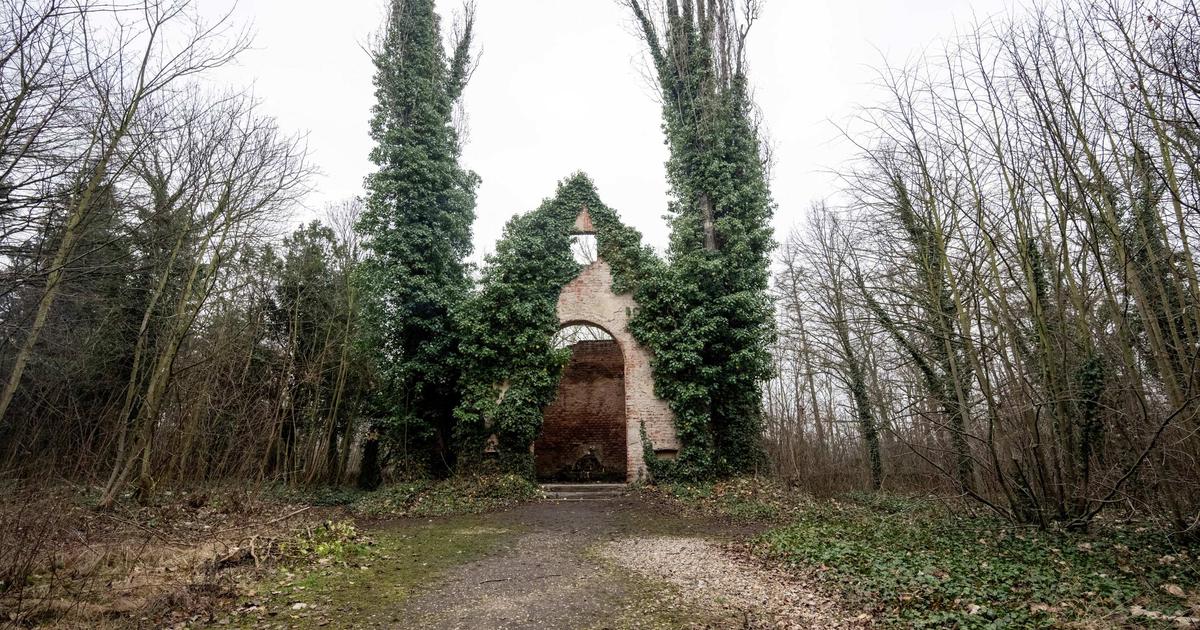It remains a forgotten place, away from the tourist circuits.
And yet, the Bohnice cemetery, nicknamed the “crazy cemetery” in Prague, is rich in a tumultuous history.
It is notably one of the settings for
Amadeus
, Milos Forman's masterpiece dedicated to Mozart, and was visited by Margaret Thatcher.
Far from the beaten track of the Czech capital and its UNESCO-listed historic center, the cemetery founded more than a century ago, but closed in the 1950s, has some 4,200 burials.
Built on the outskirts of the city to accommodate deceased patients from the Bohnice psychiatric hospital, the place sometimes attracts ghost hunters, lovers of scandals and or satanist rites attracted by its magical energy and the legends and mysteries that lure it. 'surround.
“
It’s a different cemetery
” from the others, explains Jiri Vitek, volunteer guardian of the place, former firefighter and now deputy mayor of a district of Prague.
“
It was intended for classic psychiatric patients (schizophrenics, alcoholics), but also people we do not want to meet (arsonists, pedophiles, murderers)
,” he explains to AFP.
Looted and neglected for 60 years
When the First World War broke out, Austrian soldiers hospitalized for mental illness and psychiatric patients from Italy, evacuated to Prague, were buried there.
MICHAL CIZEK / AFP
The cemetery was opened and consecrated in September 1909. "
Two days later, an eleven-year-old boy, who died of tuberculosis, became the first patient buried here
," said Alzbeta Remrova, spokesperson for the hospital in Bohnice.
At the time, the hospital resembled a village with a church, a laundry and a bakery.
It was the largest of its kind in the Austro-Hungarian Empire.
“
Patients worked in the fields, grew vegetables and worked in workshops
,” Ms. Remrova explained.
The cemetery was also used by hospital staff who wanted to be buried free of charge.
When the First World War broke out, Austrian soldiers hospitalized for mental illness and psychiatric patients from Italy, evacuated to Prague, were buried there.
Most of them died during a typhoid epidemic between 1916 and 1918, says Mr. Vitek.
The cemetery was closed in 1951, then looted and neglected for six decades, with the local chapel almost disappearing under ivy.
This extraordinary setting was chosen by the American director of Czech origin Milos Forman to film the funeral of Wolfgang Amadeus Mozart in his film
Amadeus
(1984), shot partly in Prague and awarded eight Oscars.
On video -
extract from the film
Amadeus
(1984) by Milos Forman
A grave against a case of rum
Mr. Vitek says British Prime Minister Margaret Thatcher visited the cemetery in 1990 to bring home the remains of a British pilot shot down at the end of World War II.
No one knew which grave it was, except for a local wanderer who identified it in exchange for a case of rum, Mr. Vitek added.
But most of the time, the cemetery served as a test of courage for the young people of the region, especially the southwestern part reserved for criminals.
Evoking a negative energy in this place, some believe that it is colder there than elsewhere in the cemetery.
“
Non-believers were not buried in coffins but in bags, and sanitized with lime.
And it’s the hardened lime that generates the cold
,” he assures.
In the 1980s, police discovered a satanic ritual in the cemetery.
More pragmatic Czechs used the place as a dumping ground, and that's how Jiri Vitek discovered it in 2011, while walking his dog along his wall.
“
It was filled with old refrigerators, washing machines, sofas and debris.
So I started cleaning it
,” he explains.
He has gradually led tours of the cemetery, is working on a book and plans to renovate the local chapel and memorial.
“
As a firefighter, I saved people for fifteen years.
For twelve years, I have been saving the dead
.”
ON VIDEO -
The festival of lights illuminates the historic center of Prague (2017)

